The world of Italian pasta has its superstars, such as spaghetti and linguine, but there are many other intriguing pastas that remain somewhat under the radar and pizzoccheri would definitely fall into this category. Keep reading to find out more about pizzoccheri pasta, including the delicious recipe for pizzoccheri alla Valtellinese, the hearty, delicious dish you’ll be craving with a glass of red wine and a roaring fire this December.
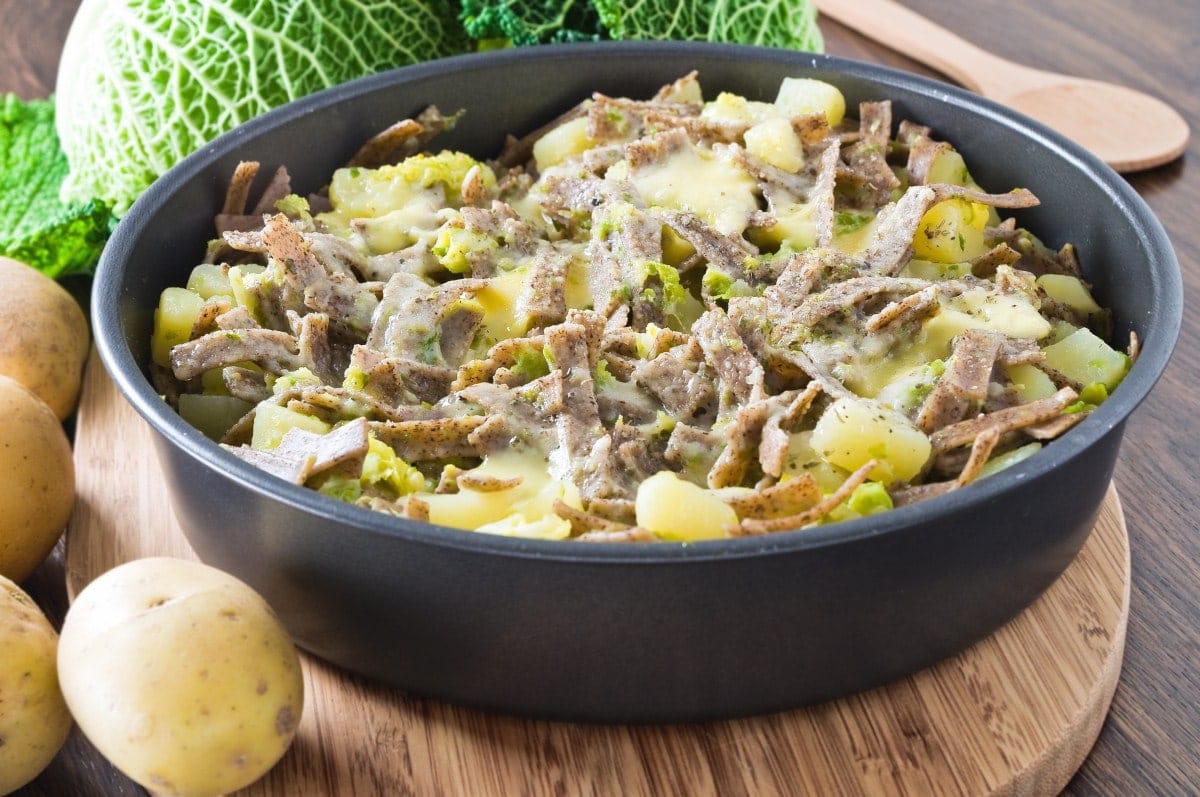
Contrary to its somewhat misleading name, pizzoccheri pasta doesn’t have anything to do with pizza. Instead it is a flat, ribbon pasta comprised primarily of buckwheat flour (which is naturally gluten free), and is typically used as the main ingredient in a hearty winter pasta dish of the same name, pizzoccheri alla Valtellinese.
With nourishing ingredients such as buckwheat flour pasta, butter, potatoes, cubes of Fontina cheese, and savoy cabbage, the dish pizzoccheri alla Valtellinese (which is universally seen as the top pizzoccheri pasta dish!) is known for being pretty easy to make and rich, tasty and very filling. As such, this recipe is the perfect culinary choice to help keep you warm and satiated on a cold winter’s day.
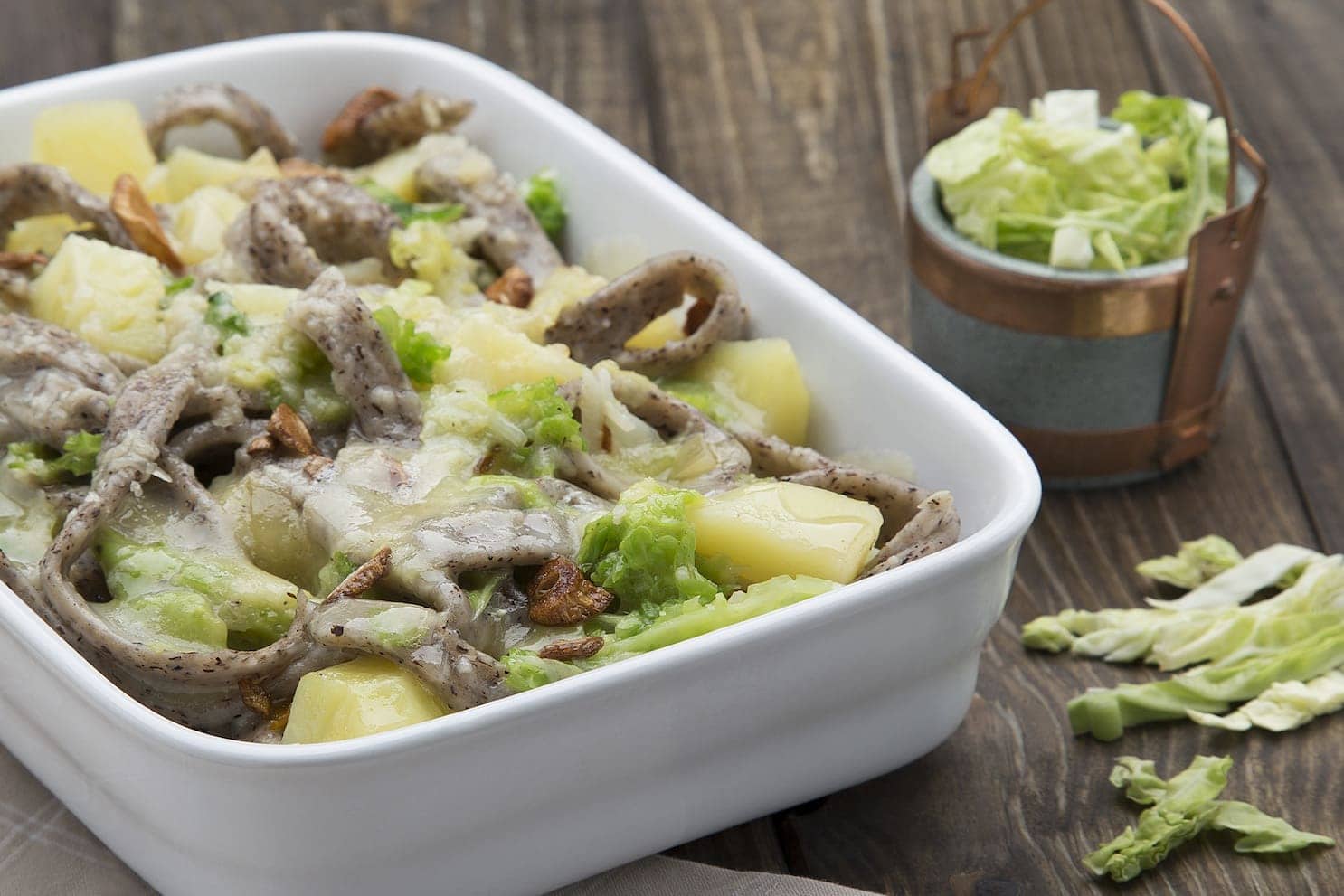
While there is some debate regarding its exact place of origin, pizzoccheri is commonly believed to be a product of the Valtellina area, which is a small valley located in the Lombardy region of Northern Italy.
Valtellina is famous around the world for its visually impressive mountainside vineyards. The location of the valley, nestled in the shadow of the Italian Alps, has also earned it a reputation as a world-class ski and winter sports mecca.
A calorie-rich dish such as pizzoccheri alla Valtellinese makes perfect sense for this type of location, given it’s the ideal fuel to help you stay energized for your next excursion down the slopes. This is one of the reasons why you’ll frequently see the popular plate served in the local hotels and restaurants in Valtellina.
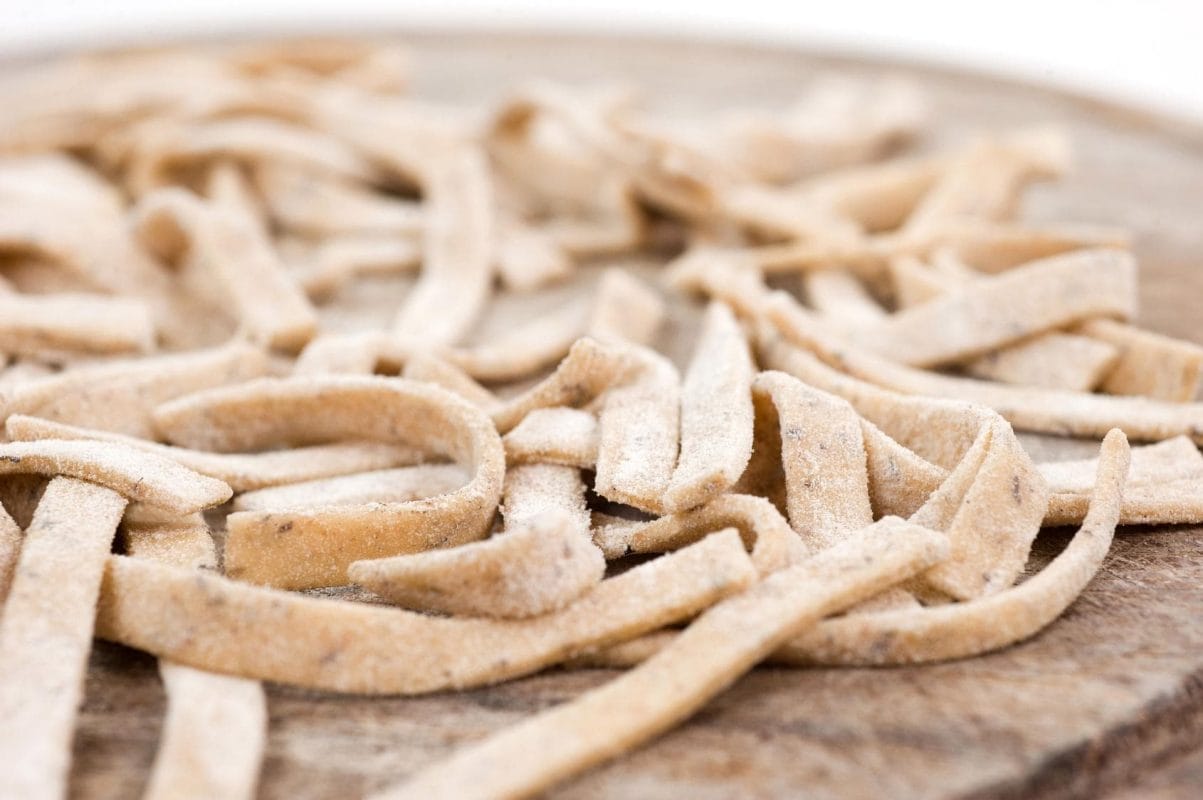
In terms of when pizzoccheri alla Valtellinese made its debut in culinary history, the dish was first mentioned in 1550 in the work of Ortensio Lando, a sixteenth-century Milanese writer who listed pizzoccheri in his Catalog of Inventories of Things that May Be Eaten in Italy.
The origin of the word “pizzoccheri” itself is the subject of a variety of theories. According to some, the word pizzoccheri is the product of the word “bizzo,” a dialect word that means “a mouthful.” Others believe that it stems from the word “piz,” which is a local dialect word meaning “a little bit” or “a little piece.” This would be fitting, as the pasta resembles short pieces or strips of tagliatelle pasta, only darker because of the buckwheat flour.
The primary ingredient of pizzoccheri pasta, buckwheat, has been grown in buckwheat fields in the area since at least the early 1600s, making it an appropriate flour choice over regular wheat flour, in light of what was available in the region.
When you consider the other hearty ingredients that comprise pizzoccheri alla Valtellinese as well, for example butter, cheese and potatoes, it only makes sense that a dish like this would emerge from an area where high-calorie but inexpensive fare would be needed to sustain the local population during leaner times and the long, cold winters.
It should be noted that pizzoccheri alla Valtellinese is a highly venerated dish in the Valtellina area, so much so that an actual Academy was established in 2002 to ensure the preservation of this time-honored traditional recipe.
The Academy of Pizzoccheri, located in Teglio (the ancient village where pizzoccheri was reportedly first made), has officially registered and codified the recipe for pizzoccheri alla Valtellinese in order to provide strict parameters for how the dish should be made.
For example, you cannot use pasta strips of just any dimension, they need to be around 7 centimeters long and .5 cm wide. In addition, you are not supposed to substitute the particular regional local cheese, Valtellina Casera DOP, because it is the only official cheese that can be used in the recipe.
As you can imagine, many people may not have access to Valtellina Casera DOP or the other specific regional ingredients, so of course a little bit of creative license is allowed if you plan to cook pizzoccheri alla Valtellinese yourself.
Keep reading for a pretty easy and hearty pizzoccheri recipe that can comfortably serve four people.
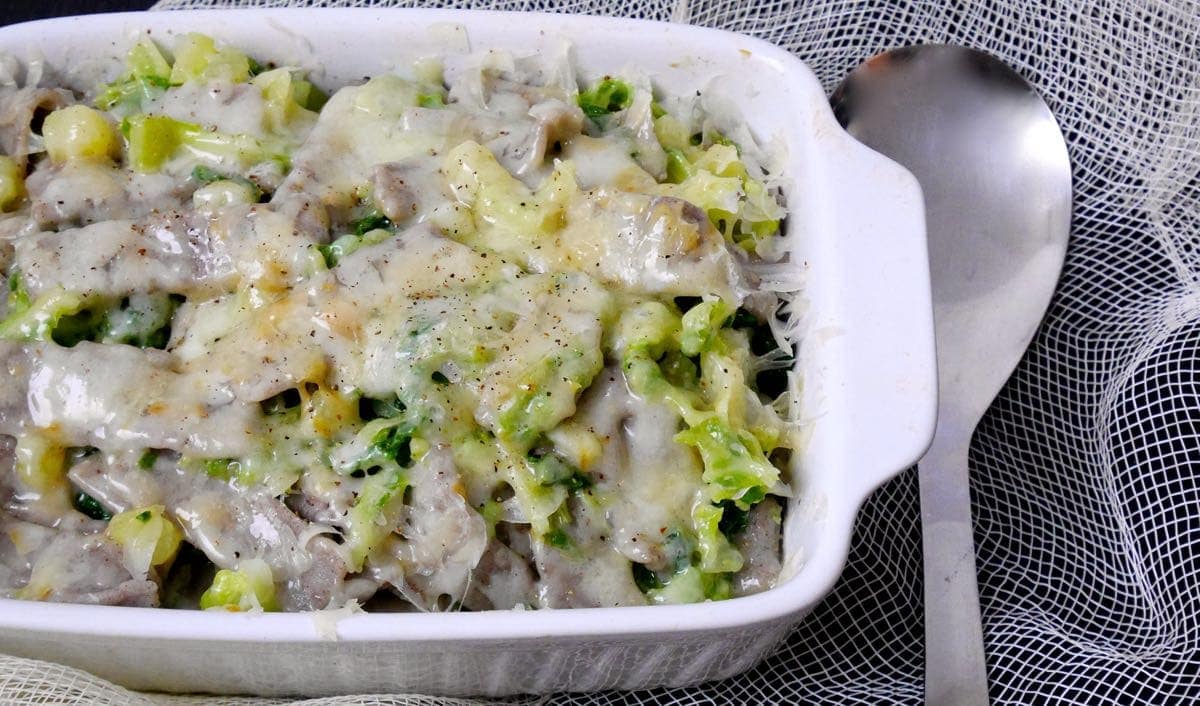
You will not need any special equipment to make pizzoccheri alla Valtellinese from the Valtellina cuisine:
Some recipes call for green beans instead of savoy cabbage to make a slightly different pizzoccheri dish. Other variations include a mix of herbs that are added during cooking. However, these are not considered “official” recipes.
You can make pizzoccheri noodles from dough you make yourself at home. You will need buckwheat flour, white flour (all purpose flour) and warm water.
Try other baked pasta casseroles:
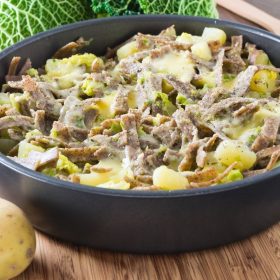
The cooked recipe should be eaten right away and doesn’t reheat very well. If you have made fresh pizzoccheri noodles, they can be kept in a sealed container in the refrigerator for 1-2 days or in the freezer for up to 3 months. Do not defrost, but cook them directly in boiling water.
This dish pairs very well with a red wine that offers a good level of tannin and acidity to help cleanse the palate, such as Rosso di Valtellina or Valtellina Superiore DOCG. Bon appetito!
This sounds so good!! I am going to try and make it!!
i had the joy of being served this dish in Italy this summer in the Lake Como district. It was made by a retired chef and it was so delicious that I had to have seconds which made eating the rest of his scrumptious meal a bit more difficult. Thank you for this recipe, I will be trying it here in Wisconsin as soon as the weather gets chilly. I did not see the Lombardy box on your website, is it a seasonal box?
My mom makes this during winter or cold weather and I love how warm and tasty it is… it’s so simple and intriguing but it’s so good. A must try!
Very informative, i enjoyed reading segment and love recipe. Will try it at home, maybe even here in Menaggio before departure.
Thank you Lucy for stopping by! Pizzoccheri are one of my favorite autumn dishes – definitely to try it out!
I was recently in the Ardenno area and had this at an ‘agritourismo’ ( dairy farm with restaurant). Can’t wait to try it at home’
I had this terrific dish on a ski trip to Sestriere (Turin) and the surrounding region. Nothing in the world tastes better for lunch on a frosty ski day. I’m delighted to find this recipe (although I know the authentic cheeses will be hard to find in the US).
Grazie mille Lee for sharing your story. Pizzoccheri are one of my favorite dishes, and I had the chance to make them here in the US. I was able to find Pizzoccheri and fontina (although the traditional recipe calls for Valtellina Casera cheese).